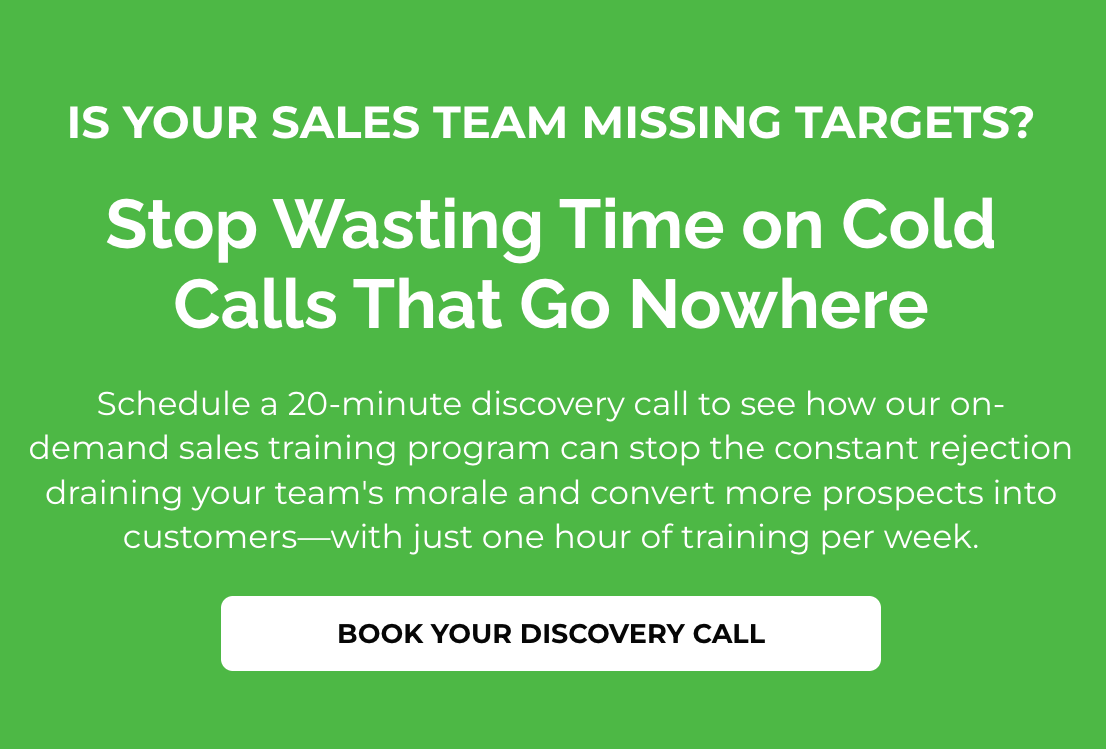The Inside Sales Blueprint for Success

The Inside Sales Blueprint for Success
In my opinion, there are no “secrets” to selling. Essentially, there are two types of inside sales strategies and techniques: good and bad. Your LinkedIn feed is full of opinions on which sales techniques work best.
The knowledge I’ve gained as a straight-commission inside sales rep over the past 25 years has given me the experience to separate fact from fiction regarding which sales techniques work consistently.
To be consistently successful as an inside sales rep, you must know the road map of a sales call. Contrary to popular belief, there is a step-by-step process for selling.
Think of sales in baseball terms. Every time you are about to pick up the phone, you’re in the batter’s box. Your job in the batter’s box is to get to first base first. So even if you hit a double, triple, home run, or even a grand slam, you still have to touch 1st base, first.
“Sales” is the same way.
For example, would it make sense to call a prospect out of the blue and ask for the “close”? Of course not.
When you walk the sales process backward, you see the step-step “bases” that need to be covered during the sales call to close deals at a higher level.
Most sales reps, even experienced reps, don’t know all the sales steps. And when you skip steps, you fill your pipeline with deals that have a low % chance of closing.
To avoid that from happening, one only needs to follow the inside sales blueprint.
Here’s the Inside Sales Blueprint for Success
1) Your OVS (Opening Value Statement)
Nothing else matters if you cannot pique your prospect’s interest in the first few seconds of the sales call. Learning how to create a winning OVS is how you get to first base.
2) Engagement Questions
Piquing your prospect’s interest in the first few seconds of the call is excellent, but what do you say next? Enter: Engagement Questions.
Engagement questions focus your prospects’ attention on a problem area you need them to think about because if there’s “no problem,” they won’t need or want to hear about “your solution.”
3) Qualifying
Most sales reps tell me they know how to qualify, so I’ll ask, “do you ever go for a close and then hear your prospect say that they need to check with their boss/partner/manager?” If so, you skipped a critical qualifying step.
If you hear any of the following, your qualifying skills need improvement:
- I need to check with
- It’s not in the budget
- We’re under contract until
These are common sales objections that are one of two things: They are telling the truth, or they are not.
Either way, if you had asked the right qualifying questions at the right time, you would have either a) uncovered this “truth” before trying for a close or b) eliminated that false objection before they had the chance to use it.
4) Presenting and Closing
When you learn how to call a prospect cold and pique their interest, ask your engagement questions, uncover problems costing them money, and qualify them, you set yourself and your prospect up for success.
By correctly qualifying the prospect, you proactively remove all of the typical stalls and objections out of the way before they have a chance to arise, and you create a sense of urgency by establishing a problem that needs to be solved.
All that is left to do is a presentation that shows them how to solve the problem and then close the deal.
When you master these three steps (Openers, Engagement Questions, and Qualifying), not only will picking up the phone be fun again, it will be profitable.
Now the question is, are you ready to learn how to execute this strategy? If so, click here.
– Michael Pedone
Michael Pedone is the CEO & Creator of SalesBuzz.com’s How to Sell with Confidence Online Sales Training Course

